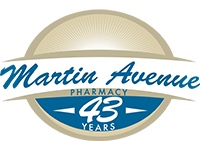Compounding for Exotics
Compounding for Exotics
As the popularity of exotic pets continues to grow, so does the demand for veterinary care for exotic animals. Households with exotic pets increased over 72% in the 1990s, and clients are more knowledgeable or involved since the advent of the internet. Unfortunately, there is not enough scientific data regarding the most appropriate drug and dosing for these species, so therapy must often rely on a case study of one animal. The uniqueness of exotic species requires individualized therapy. Yet, the number of commercially available veterinary medications is very, very limited because there is inadequate data to get medications licensed that will cover all species, due to the vast variance in environment, diet, and metabolism. When studies are presented at meetings, they often describe therapies that are not commercially available at that time, and which in fact may never be approved for manufacture. Although human drugs are often used “off-label”, the concentration (and flavor of oral liquids) is usually inappropriate.
Due to the need to provide optimal therapy, preserve endangered species, and minimize therapy-associated stress for all animals, the zoo community has been one of the first to realize the need and effectiveness of a skilled compounding pharmacist. Gary Riggs, DVM, ABVP notes: “Compounding allows me to really be involved with the animals and treat them – to be a doctor. I’m not a robot doing the same thing every day; there is always something new and challenging and our medicating capabilities need to reflect that.”
One key to therapeutic success is knowing what the animal likes to eat, and flavoring the medication accordingly. Use of customized medications can minimize the need to handle animals, and reduce the risk of transmitting bacteria and viruses that are pathogenic to the animals. Dr. Riggs comments: “You need choices of meds and different concentrations. You need alternative routes and ways to ease dosing. Compounding offers all of these. The compounding pharmacist can adjust the concentration and administration at will. Knowing I have this flexibility, I’m confident I can treat just about anything.”
Reptiles and birds have extensive respiratory systems that often become infected, but therapy is compromised by limited circulation. Antibiotics and antifungals can be effectively administered by compounding the medication for nebulization and utilizing a nebulizing chamber. The treatment of diseases in amphibians also presents unique challenges for the clinician.
“Compounding is very cost effective because it works.”
The above article incorporates information abstracted from an interview with Gary Riggs, DVM, ABVP, which was published in the International Journal of Pharmaceutical Compounding , May/June 1999, pages 1-6.
Copyright 2004, Storey Marketing – Veterinary Website Updates. Reproduction prohibited. Questions regarding this article should be directed to the compounding professionals at Martin Avenue Pharmacy, Inc.
